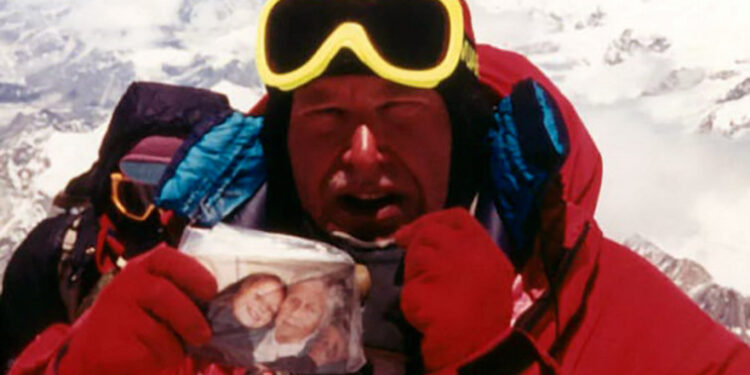Next month Steve Dixon, from Barnard Castle, sets off to climb Everest. Teesdale mountaineer Alan Hinkes reflects on what the experience was like for him…
For several minutes on May 19, 1996, no one on the planet was higher than me. I was standing on the summit of Everest, the top of the world. I remember taking in the view, south into Nepal and north over Tibet.
It felt like I could see the curvature of the earth. The air was clear, sharp, very cold, -20C and very thin. This is the altitude jumbo jets fly at. In climbing it is known as the death zone, as humans can only survive for a very short time, there are no rescue teams and it is too high for helicopters.
A human would be lucky to survive 48 hours due to lack of oxygen and low atmospheric pressure. The summit area is about the size of two king-size beds with a 3000m drop on either side.
The summit is often festooned with Buddhist prayer flags and blessed, ceremonial silk scarves fluttering in the wind. It is no place to linger. I was working as a guide and cameraman for ITN about Brian Blessed’s third attempt on Everest, so I got to work filming and took a few photos for myself, before heading down.
I was on top with only four other people, nowadays there can be 40, or more than a hundred on a good weather day in May.
I remember that I wanted to enjoy my moment on top of the world, yet I knew I must not linger long and get complacent. Ten minutes is enough at this altitude.
Eight climbers had been killed in a raging storm only nine days previously. I had passed three bodies frozen into the icy slopes. This sad sight reminded me of my mortality, but there was nothing I could do to recover them without a team of at least eight people.
On any summit my ritual is to take a photo with my daughter Fiona. This helps me to realise I must take care on the descent and return. Fiona needed her dad.
Descending is when most accidents happen. You are more exhausted and climbing down is technically more difficult.
Even though Everest is the highest mountain, I felt confident in my ability to descend safely as I had already climbed more difficult mountains such as K2.
Still, I was acutely aware that this was not Roseberry Topping and I must concentrate as one slip could be fatal.
Everest is no walk in the park and should not be underestimated.
These days the route is fixed with ropes, ladder-bridges to cross deep, dangerous crevasses and the camps are prepared, but it is still high risk.
There are avalanche and rockfall dangers, crevasses to fall into, bad weather, extreme cold and frostbite is a serious risk.
Every year several hundred people now attempt Everest, usually trying to top out in May, when there is the best weather window.
To succeed and safely return is a great achievement.







